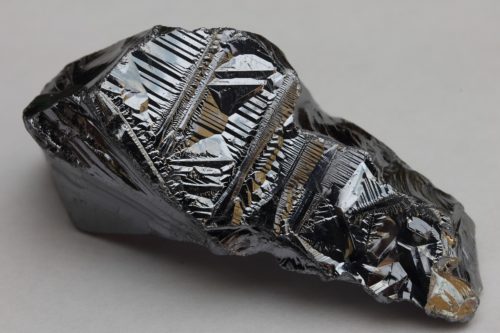Why Are Solar Panels Blue?
Page Contents
Written by qualified solar engineer Aniket. Last updated:
Most solar panels are blue because of the manufacturing of polycrystalline cells from multiple silicon crystals, and a special anti-reflective layer on the panels for higher light absorption. Although blue claims the majority, some panels can also be black, based on their respective manufacturing methods.
Technically, the color black is known to absorb the highest amount of light. Yet, most solar panels are blue in color, since polycrystalline panels make up the majority. This is why most people will recall an image of several blue rectangular panels on hearing the word ‘solar’. We will see these things in the following paragraphs. Understanding the reason behind the panel color is important as it can help identify the type of panel that is used.
Silicon – The Blue-Black Building Block
Understanding the color of solar panels requires us to look into the material they are made from. The discovery of photovoltaics and the first ever solar cells involved elements such as silver chloride and selenium. Yet, interestingly, almost all commercially used PV cells are made from Silicon. Silicon is a brittle element, and the eighth most abundant in the universe, though a bit rare in its pure form.
Silicon (Si) and its compounds are used in a myriad of applications from glass, cements, electronic elements, etc. A semiconductor material, Si has a blue tinge to itself (the reason most solar panels look blue) and a metallic greyish luster.

Silicon cells are of three main types, based on the method of manufacturing. The most common type is polycrystalline or multicrystalline cell, which is made from several small silicon crystals. This type of cell has a noticeable blue color to it.
The next type is monocrystalline, made from a single large silicon crystal. Mono cells have a black or almost black hue to it. There are other, lesser used types such as thin film, which are also close to black in color. The reason most solar panels are blue is the widespread use of polycrystalline solar panels worldwide.
The Role of Anti-Reflective Coating in Color
Anti-Reflective Coating, as one can guess from the name, is a layer over the panel that reduces reflection of incident sunlight. This means maximum light enters the panel and cells and the minimum is lost, so efficiency is improved.
AR coatings, however, change the way light waves interact with the glass top of the panel. This causes the panels to look slightly more bluish in color.
Color and Efficiency
Despite polycrystalline panels’ stronghold on the worldwide markets, black still remains the more efficient color.
Some other upcoming technologies such as CIGS thin film also produce pitch black panels, but are expensive. To keep the cost in range while making the color blacker, some companies have come up with AR coatings that do not add to the blue hue.
Color and Aesthetics
The availability of free and clean energy, according to many people, outweighs the apparent change in a building’s looks. However, not everyone believes that. For some reason, some owners feel wary of having rows of blue rectangular plates on their roofs.
To solve this problem, several companies have come up with interesting solutions. One of them is the development of nanotube patterns that give the panels a green color (in cases where owners don’t mind green). It comes at a small cost of efficiency.
Some other companies have devised pixelated printed patterns that allow any color to be printed on the glass. This allows the possibility of matching colors with the building exterior, or simply having a multicolored and fun looking array. Going a step further, it has also become possible to print images on solar panels, turning panels into possible advertisement sheets.
It should, however, be kept in mind that all of this will always lead to some extent of efficiency loss, around 10%, as said by the inventors.
Conclusion
To conclude, we can say that not all panels are blue but the most common ones certainly are, and this is due to the polycrystalline silicon and AR coating.
As technology progresses, the color may shift to black in favor of higher efficiency, provided costs can be kept low in manufacturing. If the preference however happens to be the aesthetics more than the efficiency, colored or photo-printed panels are an interesting trend to investigate.
We hope you liked this article. Please rate it or leave us a comment.
Average rating 4.2 / 5. Vote count: 17
No votes so far! Be the first to rate this post.





